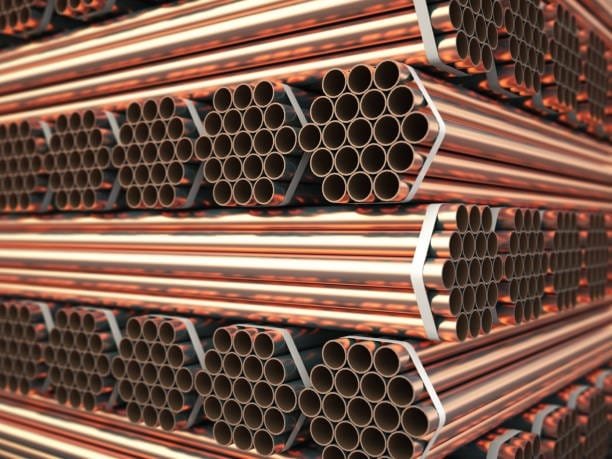Dive into our Guide on Non-Ferrous Scrap Metal! Know everything from recycling to market trends and benefits. Join us now!
Non-Ferrous Scrap Metal
Non-ferrous scrap metal includes materials such as aluminium, copper, lead, and zinc that do not contain iron. These metals are highly valuable for recycling due to their resistance to corrosion and high conductivity, making them sought after in various industries. Unlike ferrous metals, non-ferrous metals offer unique properties that enhance their usability in specific applications, contributing significantly to the recycling industry.
Recycling Non-Ferrous Scrap Metal
Recycling non ferrous scrap metal is crucial for environmental sustainability, as it conserves natural resources, reduces energy consumption, and minimises landfill waste. Additionally, it supports the economy by creating jobs and fostering sustainable practices in the metal industry. By recycling non-ferrous metals, we can help close the loop in the materials cycle, ensuring that valuable resources are reused and repurposed rather than disposed of.
Awareness About Market Trends
Understanding market trends is essential for businesses to adapt their strategies effectively. Staying informed allows companies to identify opportunities, mitigate risks, and make data-driven decisions, ultimately enhancing competitiveness and ensuring long-term success in a dynamic marketplace. Awareness of market trends also helps businesses anticipate changes in consumer behaviour and environmental regulations, enabling proactive adaptations.
Non-ferrous scrap metal refers to materials that do not contain significant amounts of iron or steel. This type of scrap includes metals like aluminium, copper, and brass, which are valued for their resistance to corrosion and lightweight properties. Non-ferrous metals are crucial for various applications due to their durability and performance characteristics.
Examples of Non-Ferrous Metals
Common examples of non-ferrous metals include aluminium, copper, lead, zinc, nickel, titanium, and magnesium. These metals are valued for their unique properties, such as conductivity, malleability, and rust resistance, making them suitable for various industrial applications.
Common Uses of Non-Ferrous Metals
Non-ferrous metals are widely utilised in several industries due to their resistance to corrosion and lightweight properties. They play important roles in electrical wiring, aerospace components, automotive parts, plumbing fixtures, and construction materials, enhancing performance and longevity compared to ferrous alternatives. Their versatility allows them to be used in products ranging from everyday items to advanced technological applications.
Non-Ferrous Scrap Metal Recycling Process
- Collection of Scrap Metal
Gathering scrap metal involves collecting discarded metallic materials for recycling. This process not only reduces waste but also contributes to environmental sustainability. Scrap metal can be sourced from various locations, including construction sites, manufacturing facilities, and household items. Proper collection methods help ensure that valuable materials are not lost to landfills. - Sorting and Processing
Effective sorting and processing are crucial for maximising recycling efficiency. Metals are separated based on type, quality, and grade to ensure that each material is handled appropriately. This systematic arrangement enhances organisation and ensures that materials are prepared for the subsequent recycling stages.
- Melting and Purification
Melting and purification involve heating metals until they transition into liquid form, followed by the removal of impurities. This technique is essential for achieving high purity levels in materials required for various scientific and industrial applications. Clean, high-quality materials lead to better product performance and longer-lasting applications. - Solidification and Transformation
Solidification refers to the process where liquid materials transition into a solid state, while transformation involves changes in structure or form. Both processes play crucial roles in material science, influencing properties such as strength and durability. The solidified metals are then processed into new forms, ready for use in manufacturing.
Market Size and Growth Projections
The market size for non-ferrous metals refers to the total potential sales for these materials within a specified timeframe. Growth projections estimate future market trends based on current data, helping businesses strategize and identify opportunities for expansion and investment. The increasing demand for non-ferrous metals, driven by technological advancements and industrial growth, presents numerous opportunities for market participants.
Key Drivers for Market Growth
Market growth is propelled by several key factors, including increasing consumer demand for sustainable products, technological innovations in recycling processes, favourable economic conditions, expanding demographics, and strong competition. These elements collectively enhance productivity and create opportunities for businesses to capitalize on emerging trends, such as the shift toward electric vehicles and renewable energy technologies.
Industry Challenges and Potential Threats
Industries face numerous challenges and potential threats, including market competition, supply chain disruptions, technological advancements outpacing current systems, regulatory changes, and shifting consumer preferences. These factors require companies to adapt quickly to maintain their competitiveness and sustainability. Businesses that can navigate these challenges effectively will be better positioned for success.
Innovations and Advancements in the Field
Recent innovations and advancements in the field of recycling have significantly transformed practices, enhancing efficiency and effectiveness. Technological developments in sorting and processing methods, as well as improvements in recycling facilities, are driving progress. These advancements offer new solutions to existing challenges while paving the way for future breakthroughs and opportunities in various sectors.

